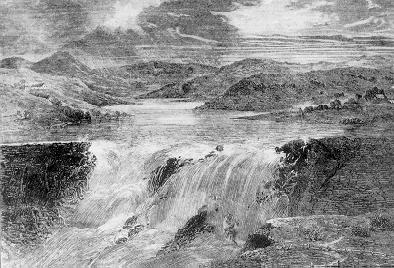
‘The Great Sheffield Flood’, also known as the Great Inundation, was a disaster that devastated areas in and above Sheffield on March 11, 1864.
Dale Dyke (or Bradfield) reservoir was one of a planned four reservoirs built around Bradfield, about 8 miles north-west of Sheffield, to satisfy the developing steel industry of Sheffield. The embankment damming the Dale Dyke stream was of earth construction (500 feet wide, 100 feet high), forming a reservoir a mile long and a quarter mile in width.
It was almost completed when it was breached during a storm just before midnight on the 11th March. Within an hour some 650 million gallons, swept through a gap 110 yards wide at the top and 70 feet deep. The torrent of water swept down the Loxley valley through Low Bradfield down to Hillsborough and into Sheffield. The flood reached a depth of 26 feet (8 m) on the upper Loxley, and 6 feet as far as Lady’s Bridge in the centre of Sheffield.
The Loxley valley was heavily industrialised, and the flood destroyed mills, grinding wheels, warehouses, etc, as well as inns and domestic dwellings. A contemporary report lists 4 mills, 17 workshops/warehouses, 3 shops, 39 houses and 2 beer houses totally destroyed; a further 17 mills, 11 workshops/warehouses, 15 shops, 376 houses and 22 beer houses were partially destroyed. Over 4,000 houses were flooded. There were 240 reported deaths, though the total may have been higher, especially if consequent deaths are taken into account.
Following a special Act of Parliament, compensation of £273,988 was paid for damage to property, injury to persons, and loss of life – one of the largest insurance awards of its time.
~ ~ ~
Yesterday, was also an anniversary of the notes written in a diary:
10 March, 1891
'Dry again in morning. Snowing heavily in afternoon. David went to fetch organ from Llanybyther... Edward Cynnach drying corn' (Diary of John Jones, Llanwnen, Cardiganshire)
~ ~ ~
The birth of my mothers village:
On this Day...
11 March, 1872
Evan Evans Bevan cut the first sod of the Seven Sisters colliery in Glamorgan, naming it after his seven daughters. The colliery closed in 1963 but the village still bears its name.


